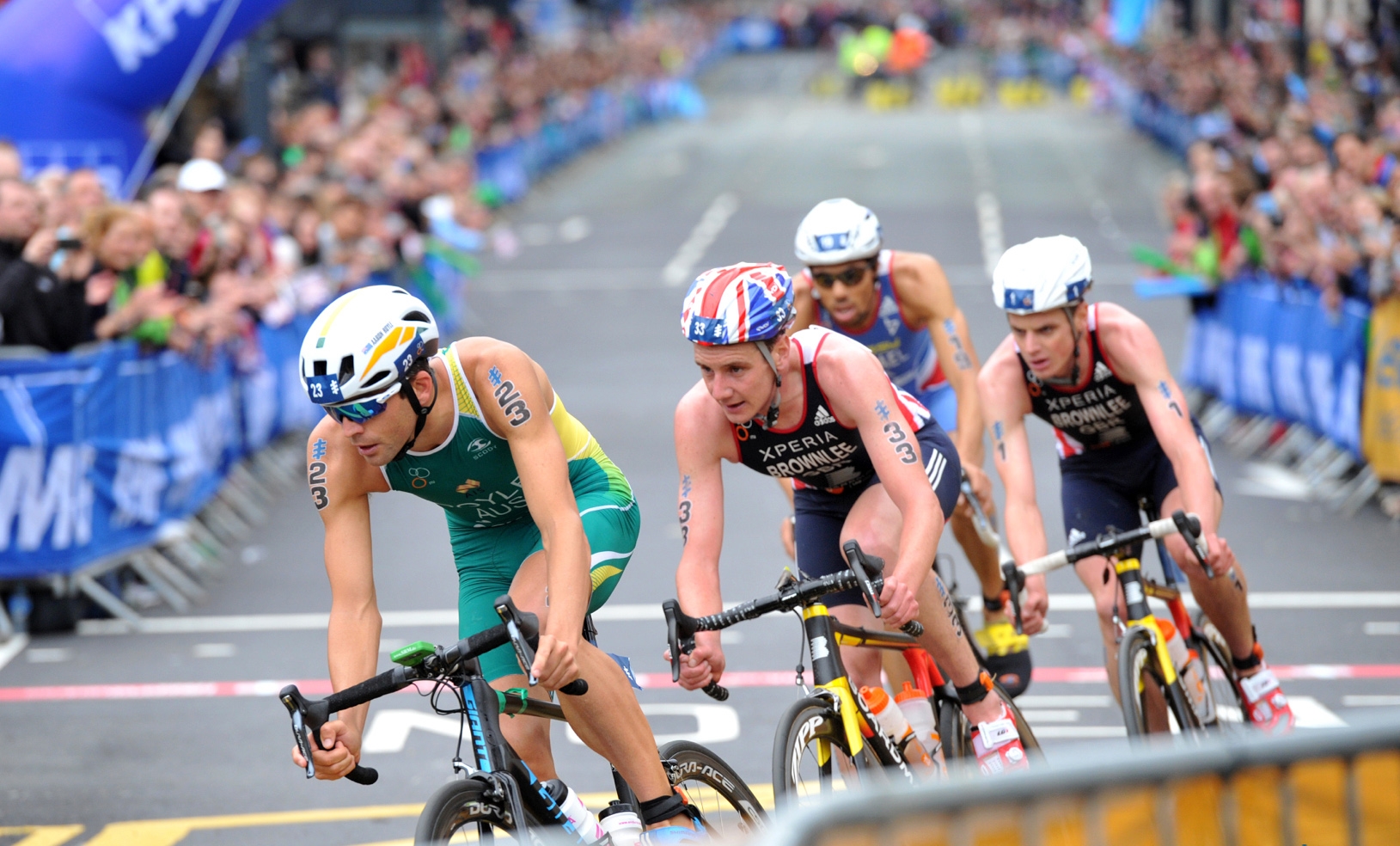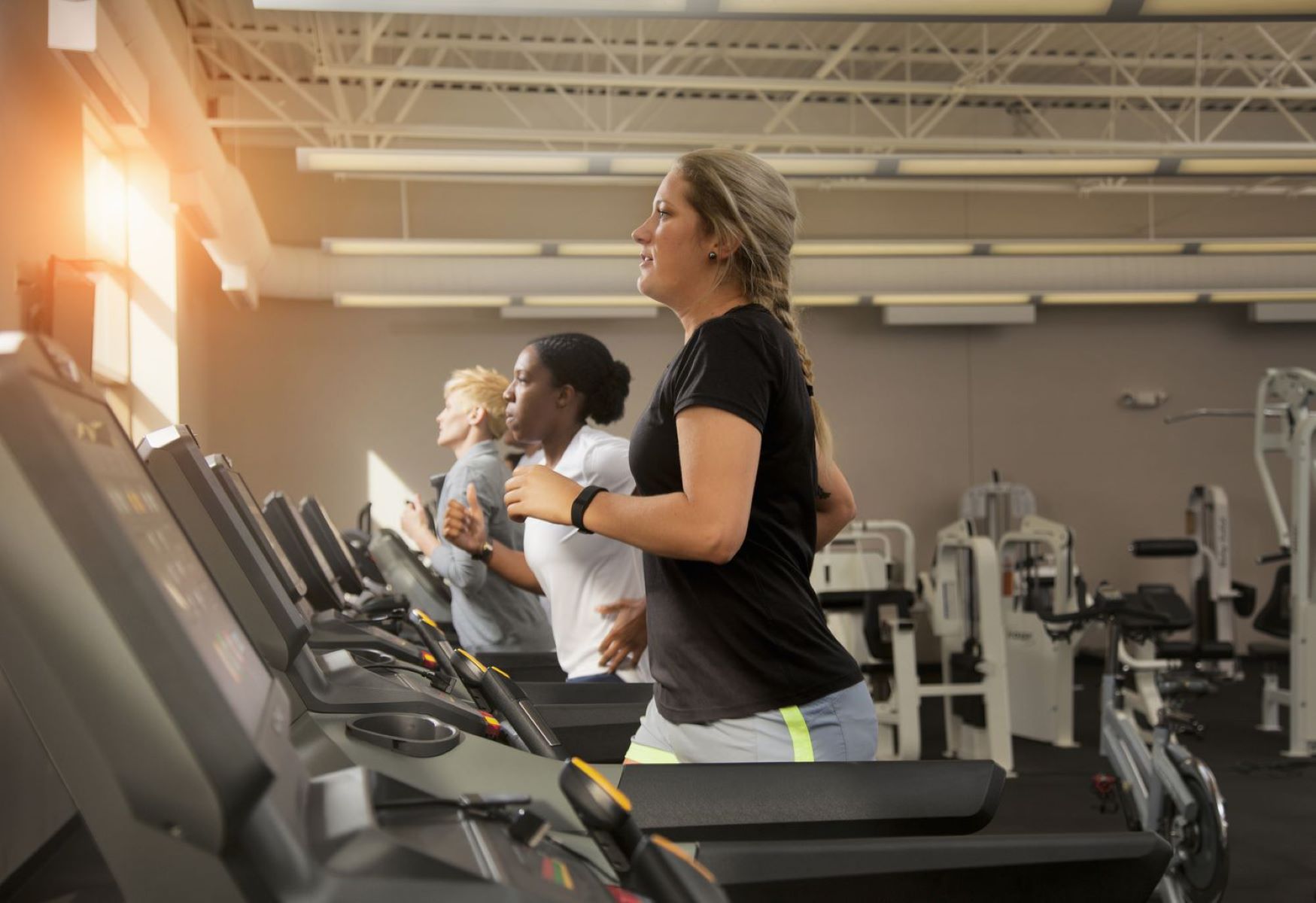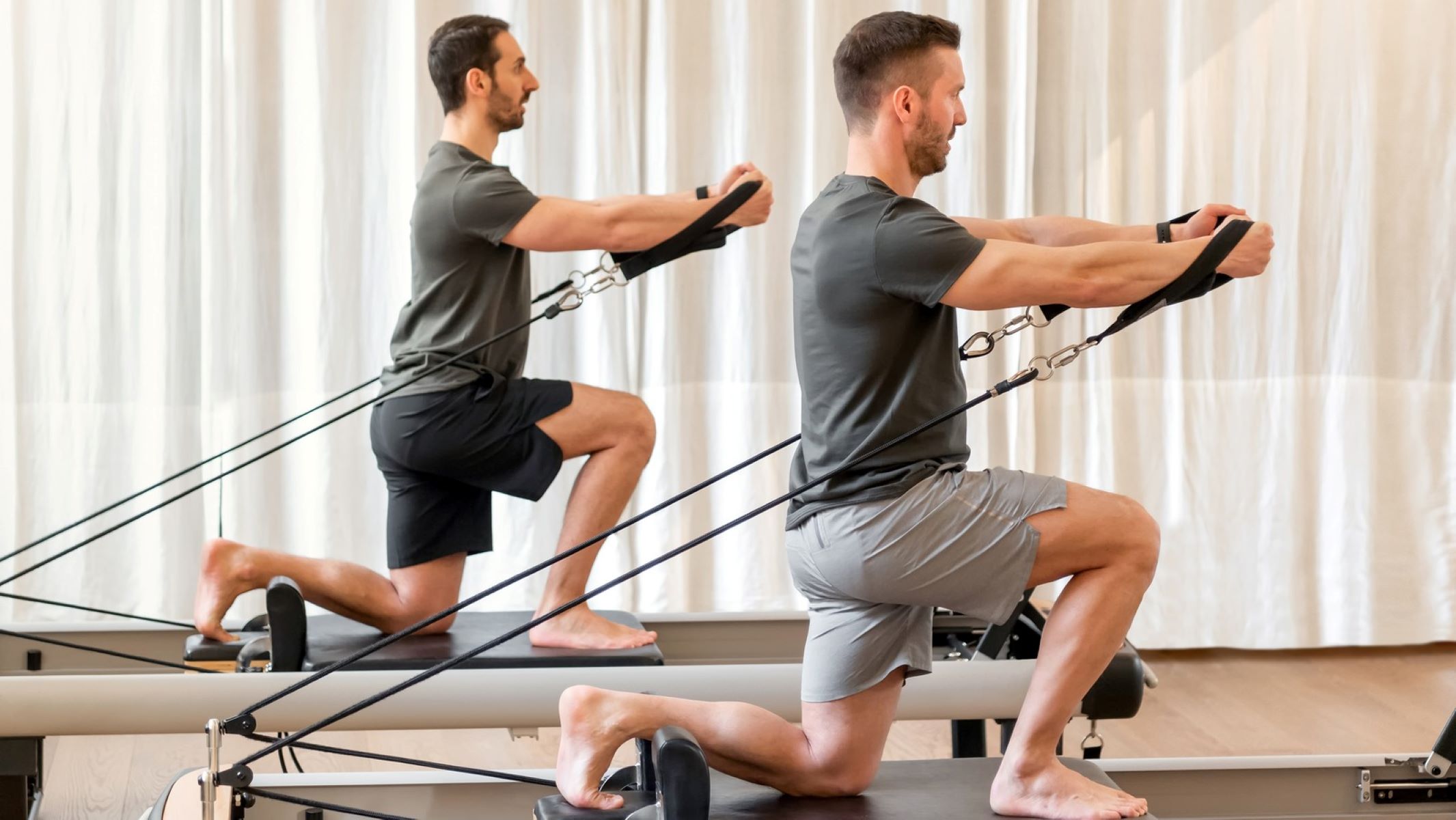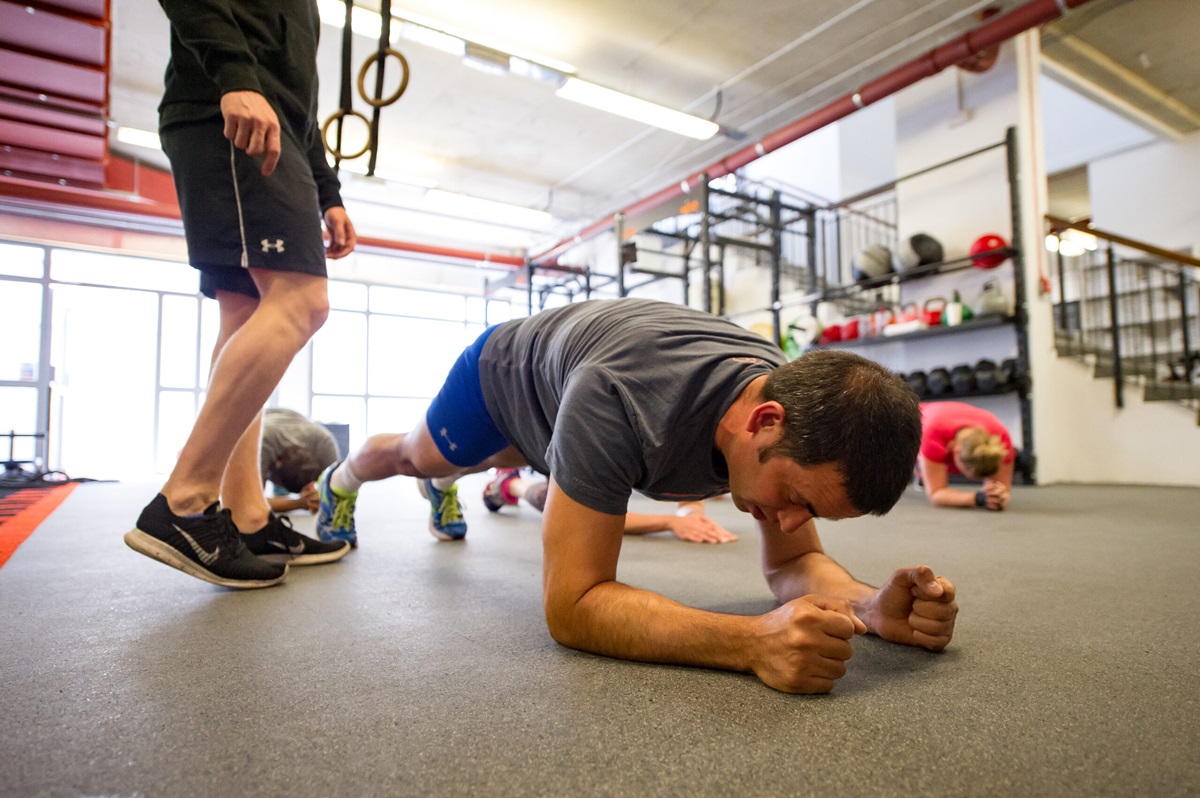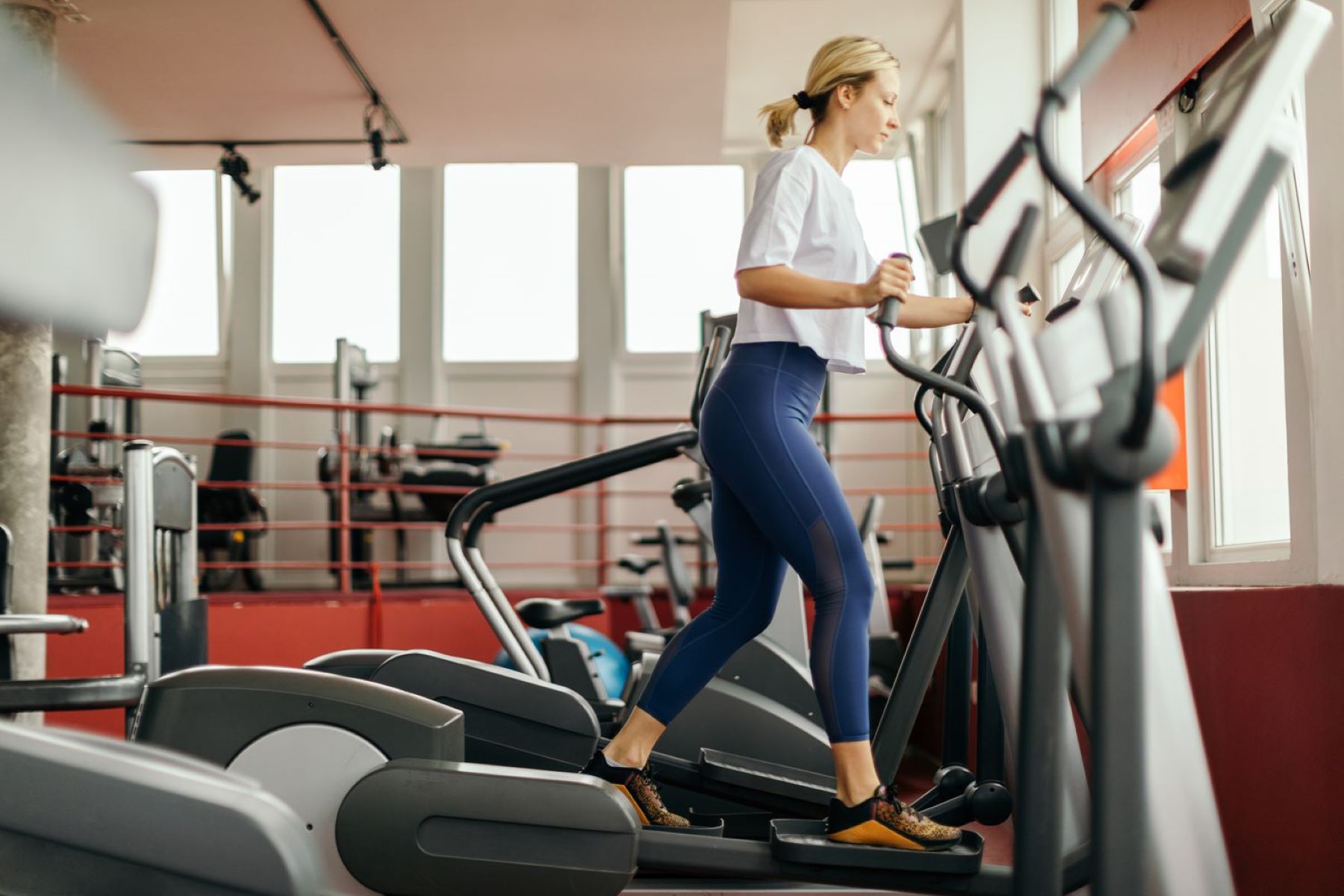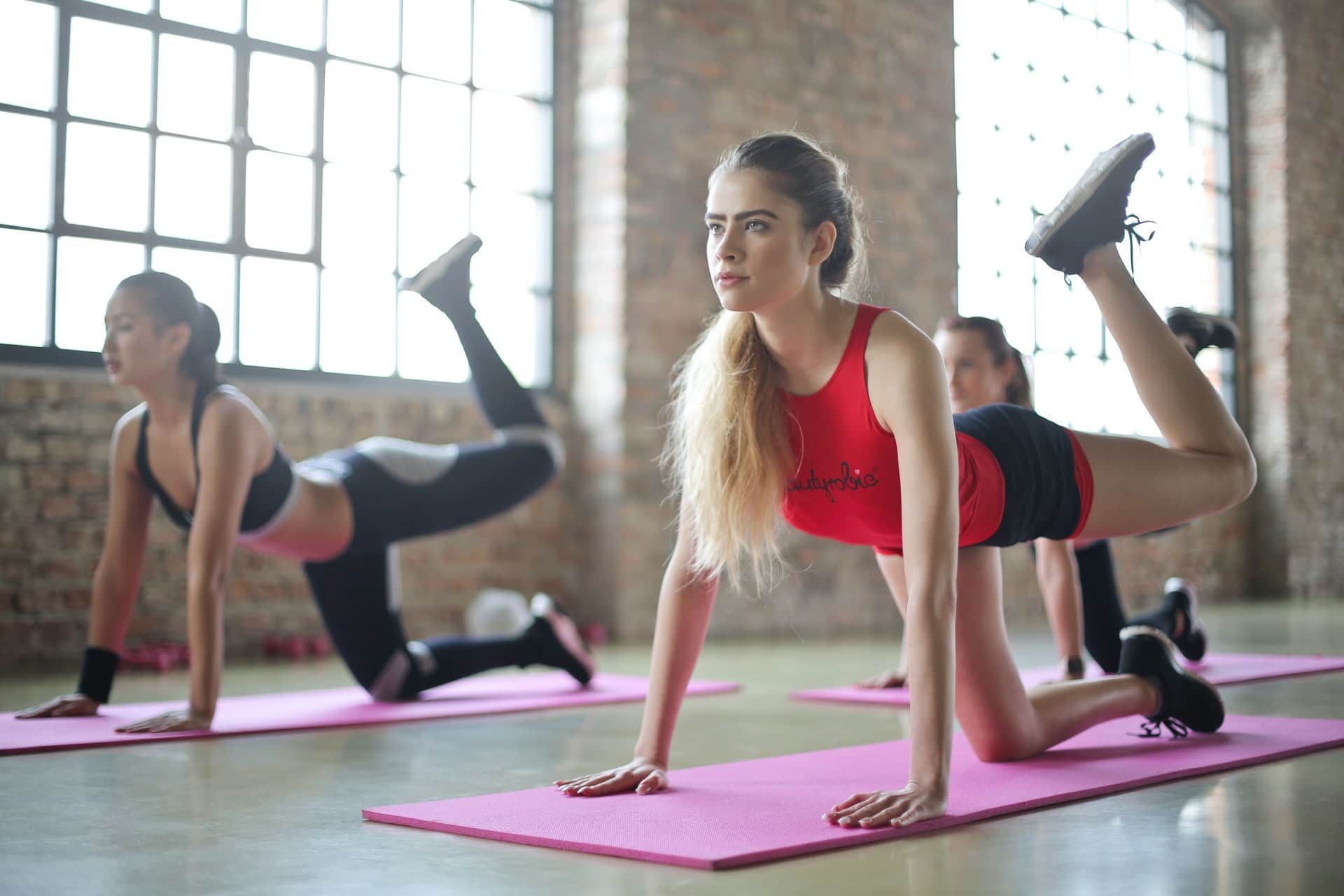

Featured
How To Build Leg Endurance
Modified: January 22, 2024
Build leg endurance with our featured training tips and exercises. Improve your stamina and tackle any challenge with ease.
Introduction
Building leg endurance is a vital component of overall fitness and athleticism. Strong and resilient legs not only allow us to perform everyday activities with ease, but also enhance athletic performance in various sports and activities. Whether you’re a runner, cyclist, or simply looking to improve your leg stamina, developing endurance in your lower body can bring numerous benefits to your physical well-being.
Leg endurance refers to the ability of your leg muscles to continue working efficiently over an extended period of time. It involves building both muscular endurance and cardiovascular endurance, as the leg muscles rely heavily on oxygen-rich blood to sustain their performance.
While many people focus on strength training to develop power and explosiveness in their legs, it is equally important to invest time and effort into building leg endurance. Endurance training not only helps to delay the onset of fatigue, but also improves muscular strength, flexibility, and overall cardiovascular fitness.
This article will guide you through the process of building leg endurance, covering various aspects such as proper warm-up, selecting the right exercises, incorporating cardiovascular activities, and utilizing interval training for maximum results. By following these strategies and implementing them into your training routine, you’ll be well on your way to developing strong, enduring legs.
Benefits of Building Leg Endurance
Building leg endurance offers a wide range of benefits that extend beyond just athletic performance. Here are some of the key advantages of focusing on leg endurance training:
- Improved Stamina: Building leg endurance allows you to engage in physical activities for longer periods without experiencing excessive fatigue. Whether you’re a runner, hiker, or perform physically demanding tasks at work, having strong and enduring legs can significantly enhance your stamina and energy levels.
- Enhanced Performance: In sports and activities that require repetitive lower body movements, such as running, cycling, or playing soccer, having well-conditioned legs can greatly improve your overall performance. With increased leg endurance, you’ll be able to maintain a consistent pace, sustain your power, and outlast your opponents.
- Reduced Risk of Injuries: Leg endurance training not only strengthens your muscles, but also improves the stability and flexibility of your legs. This reduces the risk of common lower body injuries, such as strained muscles, sprained ligaments, and knee problems. Additionally, by developing a strong foundation, you’ll have better balance and coordination, which can further minimize the likelihood of accidents and injuries.
- Better Overall Fitness: Building leg endurance contributes to your overall cardiovascular fitness. By engaging in activities that target and challenge your leg muscles, you’ll increase your heart rate and promote healthy blood flow throughout your body. This can lead to improved cardiovascular health, decreased risk of heart disease, and enhanced endurance in everyday activities.
- Weight Management: Endurance-based leg exercises, such as jogging and cycling, are effective in burning calories and shedding excess weight. By incorporating leg endurance training into your fitness routine, you’ll be able to boost your metabolism, increase fat burning, and maintain a healthy body weight.
These benefits highlight the importance of focusing on leg endurance training as part of your overall fitness journey. Whether you’re an athlete, a recreational fitness enthusiast, or simply looking to improve your daily mobility and stamina, building leg endurance can have a transformative impact on your physical well-being.
Proper Warm-up
A proper warm-up is crucial before engaging in any leg endurance training to prepare your muscles, increase blood flow, and prevent injuries. Here are some key steps to follow for an effective warm-up:
- Dynamic Stretching: Begin your warm-up routine with dynamic stretches that focus on the lower body. Dynamic stretches involve controlled movements that mimic the activities you’ll be performing during your workout. This helps to increase flexibility, improve range of motion, and activate the leg muscles. Examples of dynamic stretches include high knees, leg swings, and walking lunges.
- Cardiovascular Warm-up: Engage in light cardiovascular exercise for 5-10 minutes to increase your heart rate and warm up your entire body. Choose activities such as brisk walking, jogging, or cycling. This helps to elevate your body temperature, loosens up your muscles, and prepares your cardiovascular system for the upcoming leg training.
- Specific Warm-up Exercises: Perform specific warm-up exercises that target the leg muscles you’ll be focusing on during your training session. For example, if you’ll be doing squats or lunges, start with bodyweight squats and lunges to activate the leg muscles and improve joint mobility. Gradually increase the intensity or resistance as you progress through your warm-up sets.
- Range of Motion Movements: Incorporate movements that engage your leg joints and improve their range of motion. This can include exercises like leg swings, ankle rotations, and hip circles. Performing these movements helps to lubricate the joints, increase blood flow, and promote better overall movement quality during your workout.
- Mental Preparation: Finally, take a few moments to mentally prepare yourself for the workout ahead. Visualize yourself performing the exercises with proper form and focus on your goals. This mental preparation can help improve your performance and mindset during the training session.
Remember, a warm-up should be customized based on your individual needs and the intensity of your workout. Take into consideration any previous injuries or limitations you may have and modify the warm-up accordingly. By dedicating time to a proper warm-up routine, you’ll greatly reduce the risk of injuries and ensure optimal performance during your leg endurance training.
Choosing the Right Exercises
When it comes to building leg endurance, selecting the right exercises is crucial for targeting the appropriate muscles and achieving optimal results. Here are some key considerations to keep in mind when choosing leg endurance exercises:
- Compound Movements: Focus on compound exercises that engage multiple muscle groups and joints simultaneously. These exercises efficiently develop leg endurance while also providing functional strength gains. Examples of compound exercises include squats, lunges, step-ups, and deadlifts.
- Variety and Progression: Incorporate a variety of leg endurance exercises into your routine to work different muscle groups and prevent boredom. This not only keeps your workout interesting, but it also helps to challenge your muscles in different ways. Additionally, gradually progress by increasing the intensity or resistance of the exercises over time to continue challenging your leg endurance.
- Balance Leg Muscles: Pay attention to balancing the development of your leg muscles. It’s important to work both the quadriceps and the hamstrings to maintain symmetry and prevent muscle imbalances. Include exercises like leg curls, hamstring bridges, and glute bridges to target the posterior chain.
- Bodyweight Exercises: Don’t underestimate the effectiveness of bodyweight exercises for leg endurance. Exercises such as bodyweight squats, lunges, and step-ups can be challenging when performed with proper form and high repetitions. You can also add variations to increase the difficulty, such as jump squats and Bulgarian split squats.
- Plyometric Exercises: Incorporate plyometric exercises to improve explosive power and enhance leg endurance. These exercises involve rapid and powerful movements, such as jump squats, box jumps, and burpees. Start with low-intensity plyometric exercises and gradually progress to more advanced movements as your leg endurance improves.
Additionally, it’s important to consider your fitness level and any prior injuries or limitations you may have. If you’re a beginner or have specific concerns, consult with a fitness professional to ensure you’re performing exercises that are appropriate for your individual needs.
Remember, the key is to choose exercises that target the leg muscles you want to develop and that align with your fitness goals. By incorporating a combination of compound movements, bodyweight exercises, and plyometrics, you’ll be well on your way to building exceptional leg endurance.
Progressive Overload Training
Progressive overload training is a fundamental principle for building leg endurance and making continuous progress in your workouts. It involves gradually increasing the intensity, volume, or difficulty of your exercises over time to stimulate further adaptations in your leg muscles. Here’s how you can implement progressive overload training to improve leg endurance:
- Increase Resistance: One of the most common ways to progressively overload your leg muscles is by increasing the resistance or weight you’re using. For example, if you’re performing weighted squats, gradually increase the weight you’re lifting as your strength and endurance improve. This increased resistance forces your leg muscles to work harder and adapt to the added challenge.
- Add Repetitions: Another way to progressively overload is by adding more repetitions to your sets. Start with a comfortable number of repetitions and gradually increase the number over time. This allows your muscles to adapt to the higher volume and endurance demands placed on them.
- Shorten Rest Periods: Decreasing the rest periods between sets or exercises can also contribute to progressive overload. By reducing your recovery time, you’ll be challenging your leg muscles to work harder and maintain performance even when fatigued.
- Increase Training Frequency: Increase the frequency of your leg endurance workouts. For example, if you’re currently training your legs twice a week, consider adding an extra session to your weekly routine. This gives your leg muscles more opportunities to adapt and improve.
- Vary Exercise Intensity: Alternate between high-intensity and low-intensity workouts to further challenge your leg endurance. Incorporate interval training, where you perform periods of high-intensity activity followed by periods of active recovery. This type of training can significantly improve your leg stamina and overall cardiovascular fitness.
Remember that it’s important to progress gradually and listen to your body. Push yourself, but avoid going too heavy or too hard too quickly, as this can lead to injuries or burnout. It’s also essential to balance progressive overload with rest and recovery to allow your muscles time to repair and grow stronger.
By consistently applying progressive overload training principles, you’ll provide your leg muscles with consistent challenges, which leads to improvements in both strength and endurance. This method ensures that your muscles are continuously adapting and growing, allowing you to reach new levels of leg endurance over time.
Incorporating Cardiovascular Exercises
In addition to strength training exercises, incorporating cardiovascular exercises into your leg endurance training routine is essential for improving cardiovascular fitness and maximizing your leg stamina. Here are some effective ways to include cardiovascular exercises in your leg endurance workouts:
- Running: Running is an excellent cardiovascular exercise that targets the leg muscles and increases endurance. Whether you prefer outdoor running or using a treadmill, aim to include regular running sessions in your routine. Start with a comfortable pace and distance, gradually increasing both as your leg endurance improves.
- Cycling: Cycling is a low-impact exercise that provides a great cardiovascular workout while putting less stress on your joints. Whether you choose outdoor cycling or stationary biking, it effectively engages the leg muscles and improves endurance. Vary the intensity by incorporating sprints or hill climbs to further challenge your leg stamina.
- Stair Climbing: Climbing stairs is an effective and accessible cardiovascular exercise that targets the leg muscles while elevating your heart rate. If you have access to stairs, incorporate stair climbing into your leg endurance routine. Begin with a few flights of stairs and gradually increase the duration or intensity as you improve.
- Jump Rope: Jumping rope is a great cardiovascular exercise that enhances leg endurance, coordination, and agility. Incorporate jump rope sessions into your leg endurance workouts to boost your heart rate and improve overall cardiovascular fitness. Start with short intervals and gradually increase the duration or intensity as your endurance progresses.
- HIIT Workouts: High-intensity interval training (HIIT) is an efficient way to combine cardiovascular exercise with leg endurance training. Alternate between periods of high-intensity exercises, such as mountain climbers or jump squats, and active recovery exercises like walking or jogging. This combination of intense bursts and recovery periods helps improve leg endurance and cardiovascular performance.
Remember to choose cardiovascular exercises that you enjoy and feel comfortable with. Mixing up different types of cardiovascular activities ensures variety and prevents boredom, helping you stay motivated throughout your leg endurance training.
It’s also important to gradually increase the intensity and duration of your cardiovascular exercises. Aim for at least 30 minutes of moderate to high-intensity cardiovascular activity on most days of the week to maximize your leg endurance and overall cardiovascular fitness.
By incorporating cardiovascular exercises into your leg endurance training routine, you’ll not only develop greater stamina in your legs, but also enhance your overall cardiovascular health and fitness.
Interval Training
Interval training is a powerful technique that can significantly improve leg endurance and overall athletic performance. It involves alternating between periods of high-intensity exercise and active recovery or lower-intensity exercise. Here are some key benefits of incorporating interval training into your leg endurance routine:
- Improved Anaerobic and Aerobic Fitness: Interval training challenges both your anaerobic and aerobic energy systems. The high-intensity intervals push your anaerobic threshold, improving your ability to sustain intense efforts. The active recovery or lower-intensity intervals allow your aerobic system to recover, enhancing your overall endurance capacity.
- Increased Calorie Burn: The intense bursts of activity during high-intensity intervals increase your calorie burn during and after your workout. This can be beneficial for weight management and fat loss, as well as improving overall fitness.
- Time Efficiency: Interval training is an efficient way to get the most out of your training session in a shorter amount of time. The high-intensity intervals can provide a similar or even greater benefit compared to longer periods of lower-intensity exercise.
- Variety and Motivation: The structured format of interval training provides variety and keeps your workouts engaging and challenging. The constant changes in intensity and exercise types can help prevent boredom and keep you motivated to push your limits.
- Adaptability: Interval training can be tailored to your fitness level and specific goals. You can modify the duration and intensity of the intervals to match your current capabilities and gradually increase them as your leg endurance improves.
When incorporating interval training into your leg endurance routine, consider the following guidelines:
- Choose exercises: Select exercises that target the leg muscles and replicate movements specific to your activities or sports. For example, you might incorporate high-intensity intervals of sprinting, cycling, or stair climbing.
- Work-to-Rest Ratio: Determine the work-to-rest ratio based on your fitness level and goals. As a starting point, you might begin with a 1:1 ratio, such as sprinting for 30 seconds followed by 30 seconds of active recovery or lower-intensity exercise. Gradually increase the work duration or decrease the rest duration as your endurance improves.
- Progression: Just like with other training methods, aim to progressively overload your interval training over time. Increase the intensity, duration, or frequency of your intervals to keep challenging your leg endurance and continue making progress.
- Proper Warm-up and Cooldown: Prioritize a thorough warm-up before starting your interval training session to prepare your muscles and minimize the risk of injuries. Likewise, cool down with some light aerobic activity and stretching after completing your intervals to aid in recovery.
Interval training can be an effective and enjoyable way to enhance leg endurance. However, it’s important to listen to your body and not overexert yourself. If you have any underlying health conditions or are new to interval training, consult with a healthcare professional or a certified trainer before starting.
By incorporating interval training into your leg endurance routine, you’ll challenge your legs to perform at higher intensities, improve your overall endurance capacity, and take your leg training to the next level.
Rest and Recovery
Rest and recovery are often overlooked aspects of leg endurance training, but they are essential for maximizing performance, preventing injuries, and allowing your muscles to adapt and grow stronger. Here are some important considerations for incorporating proper rest and recovery into your leg endurance routine:
- Rest Days: Schedule regular rest days throughout the week to give your leg muscles time to recover and repair. This allows for the regeneration of muscle tissue and helps prevent overuse injuries. Use these rest days to engage in low-impact activities or active recovery exercises such as light walking or stretching.
- Sleep: Adequate sleep is crucial for muscle recovery and overall well-being. Aim for 7-9 hours of quality sleep each night to promote optimal muscle repair, hormone balance, and mental recovery. Create a consistent sleep routine and prioritize quality sleep for better leg endurance results.
- Proper Nutrition: Fueling your body with nutritious foods is essential for muscle recovery and growth. Consume a balanced diet that includes lean proteins, complex carbohydrates, and healthy fats to provide the necessary nutrients for muscle repair and replenishment. Stay hydrated by drinking plenty of water throughout the day.
- Active Recovery: Engage in light exercises or activities on your rest days to promote blood flow and recovery. Gentle stretching, foam rolling, or yoga can improve flexibility and alleviate muscle soreness. Additionally, low-impact activities such as swimming or cycling can help flush out metabolic waste and aid in recovery.
- Listen to Your Body: Pay attention to your body’s cues and adjust your training intensity or volume accordingly. It’s important to distinguish between normal muscle soreness and fatigue versus pain or injuries. Pushing through excessive fatigue or ignoring pain can lead to overtraining and setbacks in your leg endurance progress.
- Periodization: Implement a periodization plan in your leg endurance training. Periodization involves dividing your training into phases, alternating between higher-intensity and lower-intensity periods. This allows for strategic progression, adequate recovery, and prevention of plateaus or burnout.
Remember, rest and recovery are just as important as training itself. Neglecting proper recovery can lead to muscle imbalances, decreased performance, and an increased risk of injuries. By prioritizing rest and recovery, you’ll promote optimal leg endurance gains and achieve long-term success.
Proper Nutrition for Leg Endurance
Eating a well-balanced and nutritious diet is essential for supporting your leg endurance training and maximizing your performance. Proper nutrition provides your body with the energy, nutrients, and building blocks it needs to fuel your workouts, repair muscles, and promote recovery. Here are some key nutritional considerations for leg endurance:
- Macronutrients: Focus on consuming an appropriate balance of macronutrients – carbohydrates, protein, and fats. Carbohydrates are the primary source of fuel for your leg muscles, so include complex carbohydrates like whole grains, fruits, and vegetables in your diet. Protein is crucial for muscle repair and growth, so ensure you’re getting adequate amounts from sources such as lean meats, fish, legumes, and dairy products. Healthy fats from sources like nuts, avocados, and olive oil provide essential nutrients and contribute to overall health and hormone production.
- Adequate Calories: Adjust your calorie intake based on your energy expenditure and training intensity. To support leg endurance training, ensure you’re consuming enough calories from nutrient-dense foods to meet your energy needs. Monitor your weight and adjust your calorie intake accordingly to maintain a healthy balance.
- Hydration: Proper hydration is essential for optimal performance and recovery. Drink water throughout the day, before, during, and after your workouts to stay hydrated. If you engage in prolonged or intense sessions, consider adding electrolytes through sports drinks or natural sources like coconut water to replenish minerals lost through sweat.
- Pre-Workout Fuel: Consume a meal or snack that contains carbohydrates and a moderate amount of protein about 1-2 hours before your leg endurance training. This provides your body with readily available energy and helps maintain stable blood sugar levels during exercise. Examples include a banana with nut butter, Greek yogurt with fruit, or a whole grain wrap with lean protein.
- Post-Workout Recovery: Following your leg endurance workout, prioritize your post-workout nutrition to replenish glycogen stores and promote muscle repair. Aim to consume a combination of carbohydrates and protein within 30-60 minutes after your workout. This could be a protein shake, a balanced meal with lean protein and complex carbs, or a snack like chocolate milk and a piece of fruit.
- Vitamins and Minerals: Ensure you’re consuming a variety of fruits and vegetables to meet your micronutrient needs. These provide essential vitamins and minerals that support overall health, enhance recovery, and maintain proper immune function.
It’s important to note that individual nutritional needs may vary. Consult a registered dietitian or nutritionist to personalize your nutrition plan based on your goals, preferences, and any specific dietary considerations.
Remember, proper nutrition is a key component of leg endurance training. By fueling your body with the right nutrients, you’ll optimize your energy levels, support muscle recovery and growth, and improve your overall leg endurance performance.
Conclusion
Building leg endurance is a valuable pursuit for individuals seeking to improve their overall fitness and athletic performance. By incorporating the strategies outlined in this article, you can develop strong, enduring legs that can sustain and excel in a wide range of physical activities. From proper warm-up techniques to selecting the right exercises, incorporating cardiovascular exercises, utilizing interval training, and prioritizing rest and recovery, each aspect plays a vital role in enhancing leg endurance.
Remember, leg endurance is not built overnight. It requires consistency, dedication, and a progressive approach. Gradually increase the intensity, duration, and difficulty of your workouts over time to challenge your leg muscles and promote continuous growth. Don’t forget to listen to your body, prioritize rest days, and fuel yourself with proper nutrition to support your training and optimize your performance.
Whether you’re an athlete looking to improve your sports performance, an outdoor enthusiast seeking to conquer new physical challenges, or simply want to enhance your daily mobility and stamina, building leg endurance is a worthy pursuit. Enjoy the journey, stay motivated, and celebrate your progress along the way. Your strong and enduring legs will empower you to take on new heights, distances, and personal achievements.

